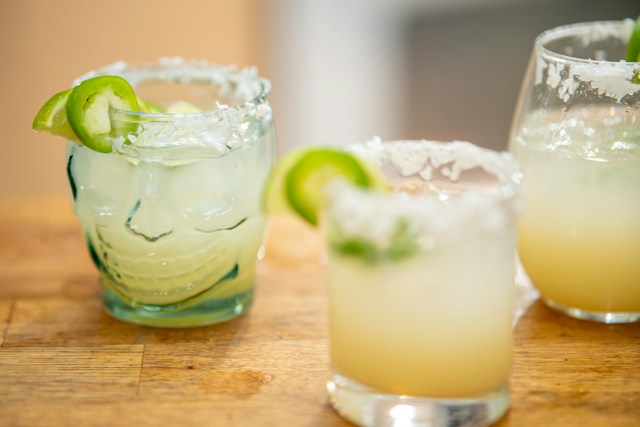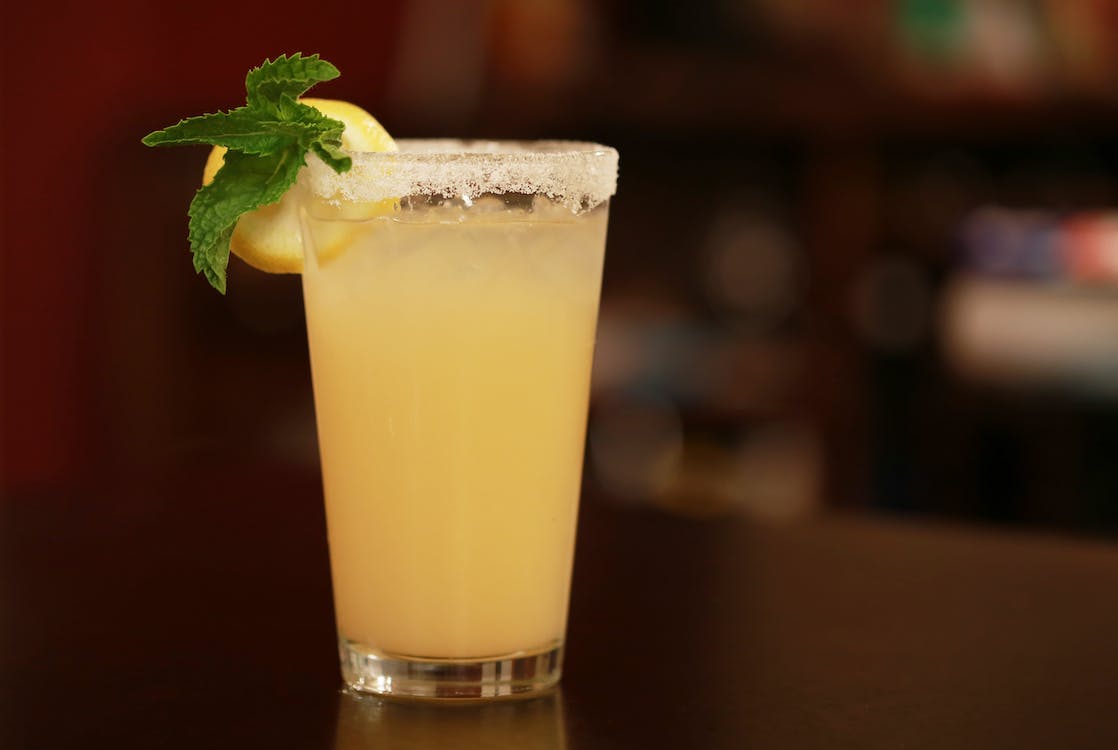
Margarita is a popular cocktail that originated in Mexico and is now enjoyed worldwide. It is made with tequila, lime juice, and orange liqueur and is usually served in a salt-rimmed glass. While it is a refreshing and delicious drink, many people wonder about the alcohol content of a margarita.
Knowing the alcohol content of a margarita can help you make informed decisions about your drinking. Whether you are enjoying a night out with friends or having a quiet drink at home, understanding the alcohol content of your margarita can help you pace yourself and avoid overconsumption. In the following sections, we will explore the factors that affect the alcohol content of a margarita and provide tips for drinking responsibly.
Table of Contents
Margarita Basics
History
The history of margarita is shrouded in mystery, with several stories claiming to be the origin of the drink. One popular story claims that the drink was created by a socialite named Margarita Sames in the late 1940s. She reportedly mixed tequila, Cointreau, and lime juice to create the cocktail for her guests at a party in Acapulco. Another story claims that the drink was invented by a bartender named Carlos “Danny” Herrera in Tijuana in the 1930s. He reportedly created the drink for a customer who was allergic to all alcohol except tequila.
Standard Ingredients
The standard ingredients for a margarita are tequila, lime juice, and triple sec. Tequila is a distilled spirit made from the blue agave plant. It is the primary ingredient in a margarita and gives the drink its signature flavor. Lime juice is added to the drink to balance the sweetness of the triple sec and to add a tangy flavor. Triple sec is a sweet orange-flavored liqueur that is used in many cocktails, including margaritas. It is used to add sweetness and depth to the drink.
 photo credit: www.pexels.com
photo credit: www.pexels.com
Alcohol Content in Margaritas
Typical Alcohol Volume
The typical alcohol volume in a margarita can vary depending on the recipe and the amount of alcohol used. A standard margarita contains 3 ounces of liquid with 2 to 2.5 ounces of alcohol. If you use 80% proof tequila, your margarita should have 33% alcohol. On the other hand, if you use 40% proof tequila, your drink will have 17% alcohol.
The amount of alcohol in a margarita will vary depending on the added mixers and the melted ice. A 3oz classic Margarita cocktail usually has about 1.5oz of alcohol that contains acid and sugar that can dull your taste buds for flavors. The cocktail has an easy-to-remember ratio of 3-2-1, but many versions revolve.
Factors Affecting Alcohol Content
The alcohol content in a margarita can be affected by several factors, including the type of alcohol used, the amount of alcohol used, and the size of the drink. A standard 4-ounce margarita contains approximately 0.6 ounces of alcohol, while a large 12-ounce margarita can contain up to 1.8 ounces of alcohol.
Other factors that can affect the alcohol content of a margarita include the type and amount of mixers used, as well as the amount of ice used. The more mixers and ice that are added to the drink, the lower the alcohol content will be. It is important to note that the alcohol content in a margarita can also vary depending on the bartender or the person making the drink.
Types of Margaritas and Their Alcohol Content
Classic Margarita
The classic margarita is made with tequila, lime juice, and triple sec or Cointreau. A typical 3-ounce serving of a classic margarita has an alcohol content of 17–33%, depending on the alcohol proof used. On the other hand, an 8-ounce glass of classic margarita contains about 1.5 ounces of alcohol.
Frozen Margarita
A frozen margarita is a blended version of the classic margarita that is made with ice to create a slushy consistency. Frozen margaritas have a similar alcohol content to classic margaritas, with an average alcohol content of 15–30%.
Flavored Margaritas
Flavored margaritas are made by adding various fruit juices, purees, and syrups to the classic margarita recipe. The alcohol content of flavored margaritas varies depending on the amount and type of alcohol used and the added ingredients. However, the alcohol content is generally similar to that of classic margaritas.
Responsible Drinking
Understanding Limits
When it comes to drinking margaritas, it is essential to understand your limits. The alcohol content in a margarita can vary depending on how it is made, but as a general rule, a standard margarita contains 2 ounces of alcohol. This alcohol is made up of two key ingredients: 1.5 ounces of tequila and 0.75 ounces of Triple Sec. Tequila usually has an ABV ranging from 35% to 55%, while Triple Sec has an ABV of around 15–40%.
It is recommended that women limit themselves to one drink per day, while men should limit themselves to two drinks per day. However, these limits can vary depending on several factors, such as weight, age, and overall health. It is always best to consult a healthcare professional to determine your personal alcohol limits.
Effects of Alcohol
It is important to understand the effects of alcohol on the body. Drinking too much alcohol can lead to several negative effects, such as impaired judgment, loss of coordination, and memory loss. It can also lead to more severe effects, such as liver damage, heart disease, and even death.
To avoid these negative effects, it is crucial to practice responsible drinking. This includes pacing yourself, drinking water between alcoholic beverages, and never drinking on an empty stomach. It is also important to avoid drinking and driving, as it can lead to serious legal and safety consequences.
Frequently Asked Questions
What is the typical alcohol content of a standard margarita?
The typical alcohol content of a standard margarita is around 10–15% ABV (alcohol by volume). This can vary depending on the recipe and the type of tequila used.
How does the alcohol content in a margarita compare to that of a beer?
The alcohol content in a margarita is generally higher than that of a beer. A standard 12-ounce beer typically contains around 5% ABV, while a standard margarita can contain anywhere from 10–15% ABV.
Can consuming one margarita impair your ability to drive?
Yes, consuming one margarita can impair your ability to drive, especially if you are lightweight or have a low tolerance for alcohol. The amount of alcohol in a margarita is enough to affect your coordination, reaction time, and judgment. It is always best to err on the side of caution and avoid driving after consuming any amount of alcohol.
What is the difference in alcohol content between a frozen margarita and a classic margarita?
There is generally no difference in alcohol content between a frozen margarita and a classic margarita. However, frozen margaritas can be more dangerous because they are often served in larger glasses and can be easier to drink quickly. This can lead to overconsumption and a higher risk of alcohol-related harm.
How many alcohol units are generally found in a margarita?
The number of alcohol units in a margarita can vary depending on the recipe and the size of the drink. A standard 3-ounce margarita contains around 1.5 ounces of alcohol, which is equivalent to one alcohol unit. However, larger margaritas can contain more alcohol units and should be consumed with caution.
Conclusion
Margaritas are a popular cocktail that can be found in many bars and restaurants. The alcohol content of a margarita can vary depending on the recipe and ingredients used. A standard margarita recipe typically contains about 1.5 ounces of tequila, 1 ounce of lime juice, and 1/2 ounce of orange liqueur, resulting in a cocktail that contains approximately 14–15% alcohol by volume (ABV).
However, the alcohol content can be higher or lower depending on the type and amount of tequila and triple sec used, as well as the overall volume of the drink in the glass. It’s important to keep in mind that the alcohol content can vary depending on the recipe and serving size.
It’s also crucial to drink responsibly and in moderation. It’s essential to be mindful of how many margaritas are consumed to avoid overconsumption and negative health effects.
Related Posts
If you’re interested in learning more about alcohol content in different types of drinks, there are a few related posts that you might find helpful. Here are some of the most informative articles on the topic:
- Is Fireball Whiskey Gluten-Free? Here’s What You Need to Know: For those with gluten sensitivity or celiac disease, it can be important to know whether or not certain alcoholic beverages are gluten-free. This post explores whether or not Fireball whiskey is safe for those with gluten sensitivities.
- Discover the Smoothest Whiskeys to Sip and Savor: If you’re a whiskey lover, you know that smoothness is one of the most desirable qualities in a good whiskey. This post explores some of the smoothest whiskeys on the market and what makes them so enjoyable to drink.
- Can You Mix Rum and Tequila? A Bartender’s Perspective: If you’re interested in mixing different types of spirits, you might be wondering whether or not it’s a good idea to mix rum and tequila. This post explores the pros and cons of mixing these two popular spirits.
- How Long Does an Unopened Bottle of Whiskey Last? A Guide to Shelf Life and Storage: If you’re a whiskey collector, you might be wondering how long an unopened bottle of whiskey will last and how to store it properly. This post provides helpful tips on how to ensure your whiskey stays fresh for as long as possible.
- Rum vs Whiskey: What’s the Difference?: If you’re interested in learning more about different types of spirits, you might be curious about the differences between rum and whiskey. This post explores the unique characteristics of each spirit and what sets them apart from one another.



